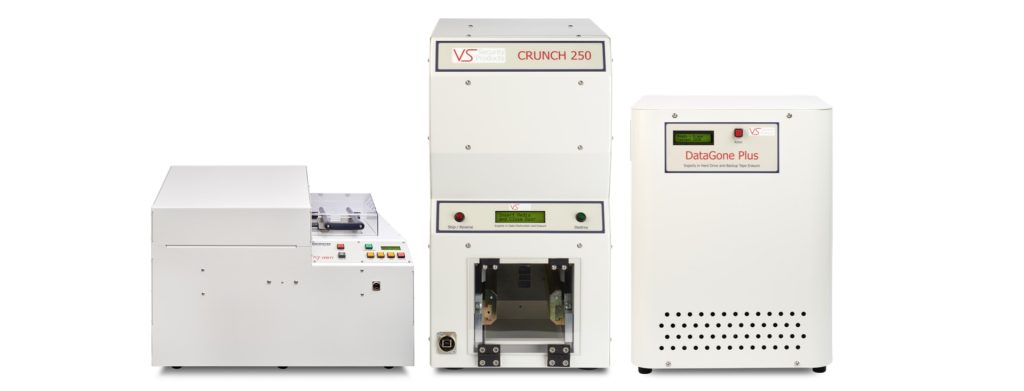Generative AI and Chatbot Data Security Challenges: The Need for Effective Data Destruction…
Generative AI and Chatbot Data Security Challenges: Effective Data Destruction Policies For The Future

As generative AI and chatbot services become increasingly integrated into business operations, the data they generate and store — whether on the cloud, servers, or local hard drives — presents significant security challenges. The sensitive nature of this data, which often includes customer and employee interactions, requires robust measures to ensure its secure storage and, critically, its complete removal once it is no longer needed. The rise of cyber threats targeting this data has heightened the importance of comprehensive data destruction policies as the most secure method for eliminating sensitive information.
Data Storage and Security Risks
Generative AI and chatbots rely heavily on data to function effectively. This data is typically stored across various platforms, including cloud services, on-premise servers, and local hard drives. Each of these storage methods comes with its own set of vulnerabilities:
1. Cloud Storage: While cloud service providers implement stringent security measures, the data stored on the cloud is still susceptible to breaches. Unauthorized access, misconfigurations, and insider threats can expose sensitive data, making it imperative for organizations to manage their cloud environments vigilantly.
2. On-Premise Servers: Data stored on local servers offers companies more control over security but also demands rigorous maintenance and security protocols. Servers can become prime targets for cyberattacks, especially if they are not adequately protected against evolving threats.
3. Local Hard Drives: Although less common in enterprise settings, local hard drives can store sensitive chatbot data, particularly during offline operations. These drives are vulnerable to theft, physical damage, and unauthorized access, which can lead to significant data breaches if not properly secured.
The Imperative of Data Destruction
Despite the best efforts to secure stored data, the most effective way to protect it from unauthorized access after its useful life is through data destruction. Simply deleting files or reformatting drives does not ensure that data is irretrievable; advanced techniques can often recover this information. Therefore, organizations must adopt data destruction practices that render data permanently inaccessible.
- Degaussing for Magnetic Media: For magnetic storage media, such as hard disk drives (HDDs), degaussing is an effective method of data destruction. This process involves using a high-powered magnet to scramble the data on the drive, making it unrecoverable. Degaussing is particularly important for legacy systems that may still use magnetic storage. (Explore the DataGauss LG Max degausser)
- 2. Physical Destruction of SSDs and HDDs: Solid-state drives (SSDs) and hard disk drives (HDDs) pose unique challenges for data destruction. While degaussing is effective for HDDs, it is not suitable for SSDs, which require physical destruction. Methods such as shredding or crushing the drives ensure that the data cannot be reconstructed, providing the highest level of security. (Explore the Crunch 250 HDD/SSD destroyer)
The Need for Comprehensive Data Policies
To address the data security challenges posed by generative AI and chatbot services, companies must develop and implement comprehensive data policies. These policies should include guidelines for:
– Data Retention: Clearly define how long data should be retained based on its usefulness and compliance requirements.
– Data Access: Implement strict access controls to ensure that only authorized personnel can access sensitive data.
– Data Destruction: Establish protocols for the secure destruction of data, including degaussing and physical destruction, to prevent data recovery from legacy systems.
These policies should also account for the complete lifecycle of data, from its creation and storage to its eventual destruction. This approach is crucial for ensuring that sensitive data does not remain vulnerable to cyber threats, particularly as the use of AI and chatbots continues to grow.
Generative AI In Business
As the reliance on generative AI and chatbots increases, so too does the need for robust data security measures. Storing sensitive data on the cloud, servers, and local hard drives introduces various security risks that can be mitigated through comprehensive data destruction policies. Degaussing magnetic media and physically destroying SSDs and HDDs are essential practices that companies must adopt to ensure the complete and secure removal of data once it is no longer in use. By implementing these measures, organizations can better protect themselves against the ever-evolving landscape of cyber threats.
To implement a suitable data destruction capability into your business, get in contact with us today to learn more about effective solutions: [email protected]
Photo credit: Iconica Media

